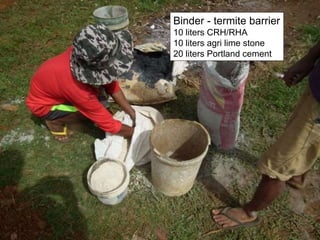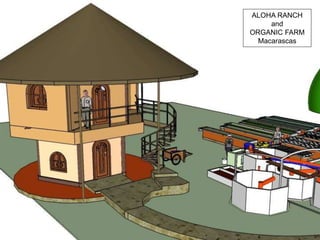The document discusses sustainable building practices, particularly focusing on using earth as a building material, including its various applications like rammed earth and adobe. It highlights the advantages of using loam, such as its energy efficiency and environmental benefits, while also acknowledging its disadvantages compared to industrial materials. Additionally, it addresses the importance of using appropriate stabilizers and methods for construction to enhance performance and sustainability.





















































































































































![High R value insulation
[Low U value]
R value measures thermal resistance](https://image.slidesharecdn.com/01sustainablebuilding-earth1-180420192924/85/Sustainable-Building-EARTH-1-150-320.jpg)






















































































































